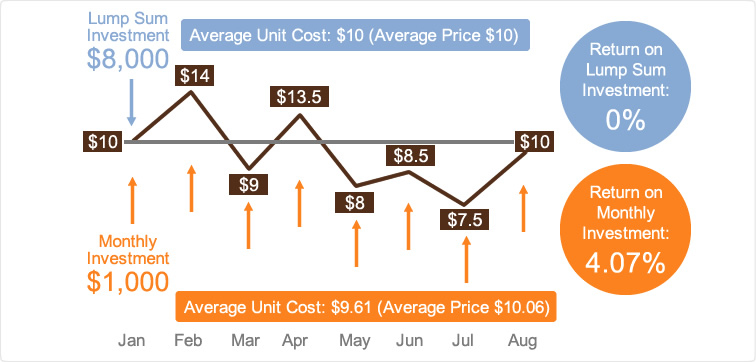Pump and Dump Schemes: Complete Guide
In the world of investments, particularly in the volatile cryptocurrency and stock markets, pump and dump schemes are a form of market manipulation that can have significant impacts on prices. These schemes involve artificially inflating the price of an asset through deceptive means and then selling it off at a profit, leaving unsuspecting investors to suffer losses. In this guide, we will explore what pump and dump schemes are, how they work, their consequences, and how to protect yourself from falling victim to such fraudulent activities.
What is a Pump and Dump Scheme?
A pump and dump is a fraudulent scheme that involves inflating the price of a particular asset, such as a cryptocurrency, stock, or other financial instruments, through misleading or false statements. Once the price is pumped up, the perpetrators of the scheme “dump” their holdings, selling off their assets at the artificially inflated price, and making a profit. The value of the asset then collapses, leaving other investors with significant losses.
Key Characteristics of Pump and Dump Schemes:
- Artificial Price Inflation (Pump): A group of individuals or entities work together to artificially drive up the price of an asset by spreading misinformation, hype, or through coordinated buying.
- Profit-taking (Dump): Once the price has been inflated to a certain level, those behind the scheme sell off their holdings, often within a short time frame.
- Victims Left Behind: The price crashes, and those who bought into the hype are left with significant losses, often with little to no recourse.
How Do Pump and Dump Schemes Work?
While the exact mechanics of a pump and dump scheme can vary, the general process follows a common pattern:
1. Targeting the Asset
Pump and dump schemes often target small-cap stocks, cryptocurrencies, or lesser-known assets. These assets tend to have lower liquidity, meaning there is less market activity, making it easier to manipulate their prices. In the case of cryptocurrencies, altcoins with low market capitalization are frequently targeted, as they can be manipulated more easily compared to larger, well-established coins like Bitcoin.
2. Spreading Hype
Once the asset is selected, the perpetrators of the scheme begin spreading hype and misinformation through various channels:
- Social Media: The pumpers might use Twitter, Telegram, Reddit, or Discord to generate excitement about the asset.
- Paid Influencers: Sometimes, individuals with large followings are paid to promote the asset, making it seem like there is genuine interest or insider knowledge.
- Fake News and Rumors: False claims about the asset’s potential, partnerships, or upcoming developments are shared to create buzz.
The goal is to create FOMO (fear of missing out) among potential buyers, encouraging them to purchase the asset out of excitement or the belief that they will make quick profits.
3. Coordinated Buying
In some cases, those behind the scheme begin purchasing large amounts of the asset at low prices, driving up demand and creating the illusion of a legitimate rally. As the price rises, more unsuspecting investors get involved, believing that they are entering a profitable investment opportunity.
4. Dumping the Assets
Once the price reaches a certain level, the perpetrators of the pump and dump scheme begin selling off their assets. This process is known as the “dump.” They sell at the artificially inflated price, often making huge profits in a very short period. This creates a sharp drop in the asset’s price once the selling begins, leaving those who bought in at the peak with significant losses.
5. The Collapse
After the dump, the asset’s price rapidly falls as there is no longer any genuine demand to support it. The asset returns to its true value, and those who bought into the hype are left holding worthless or severely depreciated assets.
Consequences of Pump and Dump Schemes
The impact of pump and dump schemes can be devastating to both individual investors and the market at large. Here are some of the key consequences:
1. Financial Losses for Victims
The most immediate consequence of a pump and dump scheme is the financial loss suffered by the investors who bought into the asset at inflated prices. When the value crashes, they are often left with worthless holdings or substantial losses. This is particularly problematic for retail investors who may not have the experience or resources to protect themselves from such scams.
2. Market Instability
Pump and dump schemes can contribute to overall market instability. They artificially distort prices, making it difficult for legitimate investors to assess the true value of an asset. These manipulative activities can lead to volatility in the market, which may deter long-term investors from participating.
3. Regulatory Scrutiny and Legal Action
Pump and dump schemes are illegal in many jurisdictions. Regulatory bodies such as the U.S. Securities and Exchange Commission (SEC), the Commodity Futures Trading Commission (CFTC), and others closely monitor the financial markets to detect and prevent such fraudulent activities. Individuals or groups caught orchestrating a pump and dump scheme can face heavy fines, penalties, and even criminal charges.
In the cryptocurrency market, regulatory oversight is still developing, but authorities are increasingly focused on tackling fraudulent practices, including pump and dumps.
4. Damage to Trust and Reputation
Once a pump and dump scheme is uncovered, it can seriously damage the trust and reputation of the asset involved, as well as the platforms where the scheme was carried out. Investors become wary of participating in such markets, and even legitimate projects may suffer from the fallout.
Examples of Pump and Dump Schemes
1. The “Meme Coin” Pump (Cryptocurrency Example)
In the cryptocurrency world, pump and dump schemes are prevalent, particularly with altcoins or meme coins. For instance, in 2021, a coin called Dogecoin saw huge price fluctuations due to coordinated pumps driven by online communities. While Dogecoin was not directly involved in a pump and dump, similar lesser-known coins were targeted by pumpers who used social media platforms like Reddit’s WallStreetBets or Telegram channels to push the coin’s price higher before selling off their holdings.
2. Stock Market Pump and Dump (Traditional Example)
Pump and dump schemes have been around long before the cryptocurrency boom. For example, in the stock market, there have been numerous instances of penny stocks being targeted by such schemes. Small, illiquid stocks with low trading volumes are chosen, and conspirators spread false rumors or exaggerated claims to boost the stock price. Once the price peaks, the perpetrators sell off their shares, and the price crashes.
How to Protect Yourself from Pump and Dump Schemes
While pump and dump schemes can be difficult to avoid entirely, there are several steps you can take to protect yourself from falling victim to them:
1. Do Your Own Research (DYOR)
Before investing in any asset, make sure you do thorough research. Relying on hype or hearsay is a recipe for disaster. Look at the asset’s fundamentals, its use case, and the overall market sentiment. Avoid getting involved in assets that seem to be experiencing sudden, unexplained price spikes.
2. Be Wary of Hype
If you notice a sudden surge in social media activity or posts promoting an asset, approach it with caution. Look for signs of FOMO (fear of missing out) tactics, which are commonly used in pump and dump schemes to convince people to buy.
3. Invest in Liquid Assets
Liquidity refers to how easily an asset can be bought or sold without significantly affecting its price. Assets with higher liquidity are harder to manipulate. Therefore, consider investing in well-established and liquid assets such as Bitcoin or large-cap stocks instead of small, lesser-known assets.
4. Avoid “Get Rich Quick” Promises
Pump and dump schemes often target investors who are looking for quick profits. If an investment opportunity promises substantial returns in a very short time, it is likely too good to be true. Always be skeptical of promises of guaranteed profits.
5. Use Reputable Platforms
Trade on established and reputable platforms that follow regulatory guidelines and employ security measures to protect investors. Platforms that allow free trading without adequate oversight may be a red flag.
6. Report Suspicious Activities
If you suspect that a pump and dump scheme is taking place, report it to the relevant regulatory bodies or the platform where the activity is occurring. This can help prevent further manipulation and protect other investors.
Conclusion
Pump and dump schemes are manipulative tactics used to artificially inflate the price of an asset, making a profit at the expense of other investors. They are illegal in many jurisdictions, and those who orchestrate them can face severe penalties. However, with the rise of cryptocurrency markets, these schemes have become more common and harder to detect.
To protect yourself from falling victim to a pump and dump scheme, always conduct thorough research, be cautious of sudden price surges, and avoid getting caught up in hype. By staying informed and cautious, you can safeguard your investments from fraudulent activities and avoid the significant losses associated with such schemes.




